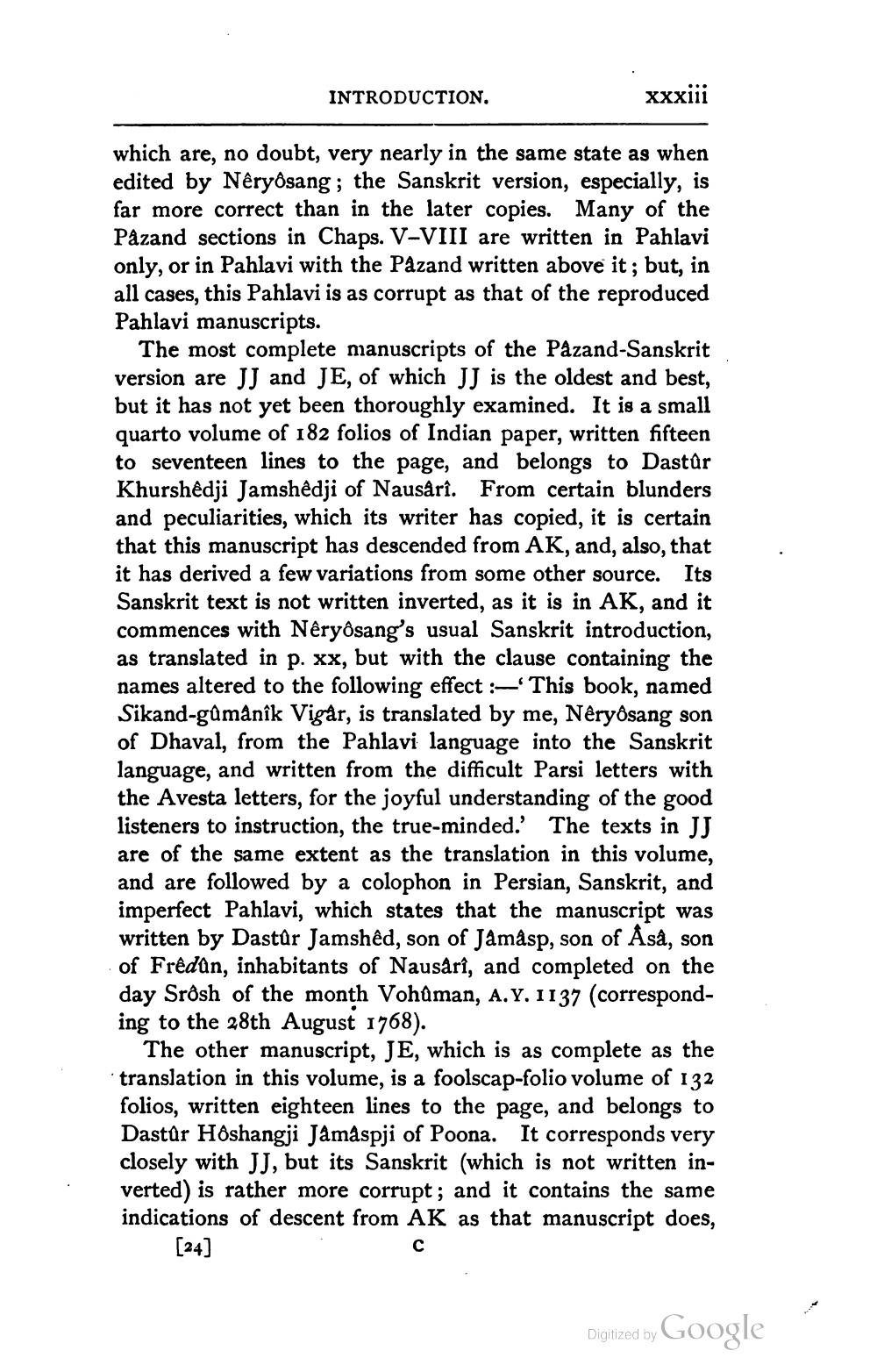________________
INTRODUCTION.
xxxiii
which are, no doubt, very nearly in the same state as when edited by Nêryosang ; the Sanskrit version, especially, is far more correct than in the later copies. Many of the Pazand sections in Chaps. V-VIII are written in Pahlavi only, or in Pahlavi with the Pazand written above it; but, in all cases, this Pahlavi is as corrupt as that of the reproduced Pahlavi manuscripts.
The most complete manuscripts of the Pazand-Sanskrit version are JJ and JE, of which JJ is the oldest and best, but it has not yet been thoroughly examined. It is a small quarto volume of 182 folios of Indian paper, written fifteen to seventeen lines to the page, and belongs to Dastûr Khurshedji Jamshedji of Nausârî. From certain blunders and peculiarities, which its writer has copied, it is certain that this manuscript has descended from AK, and, also, that it has derived a few variations from some other source. Its Sanskrit text is not written inverted, as it is in AK, and it commences with Nêryôsang's usual Sanskrit introduction, as translated in p. xx, but with the clause containing the names altered to the following effect :- This book, named Sikand-gůmânîk Vigar, is translated by me, Néryðsang son of Dhaval, from the Pahlavi language into the Sanskrit language, and written from the difficult Parsi letters with the Avesta letters, for the joyful understanding of the good listeners to instruction, the true-minded.' The texts in JJ are of the same extent as the translation in this volume, and are followed by a colophon in Persian, Sanskrit, and imperfect Pahlavi, which states that the manuscript was written by Dastûr Jamshed, son of Jåmåsp, son of Asà, son of Frédun, inhabitants of Nausârî, and completed on the day Srðsh of the month Vohûman, A.Y. 1137 (corresponding to the 28th August 1768).
The other manuscript, JE, which is as complete as the 'translation in this volume, is a foolscap-folio volume of 132 folios, written eighteen lines to the page, and belongs to Dastur Hôshangji Jamaspji of Poona. It corresponds very closely with JJ, but its Sanskrit (which is not written inverted) is rather more corrupt; and it contains the same indications of descent from AK as that manuscript does,
[24]
Digitized by Google




